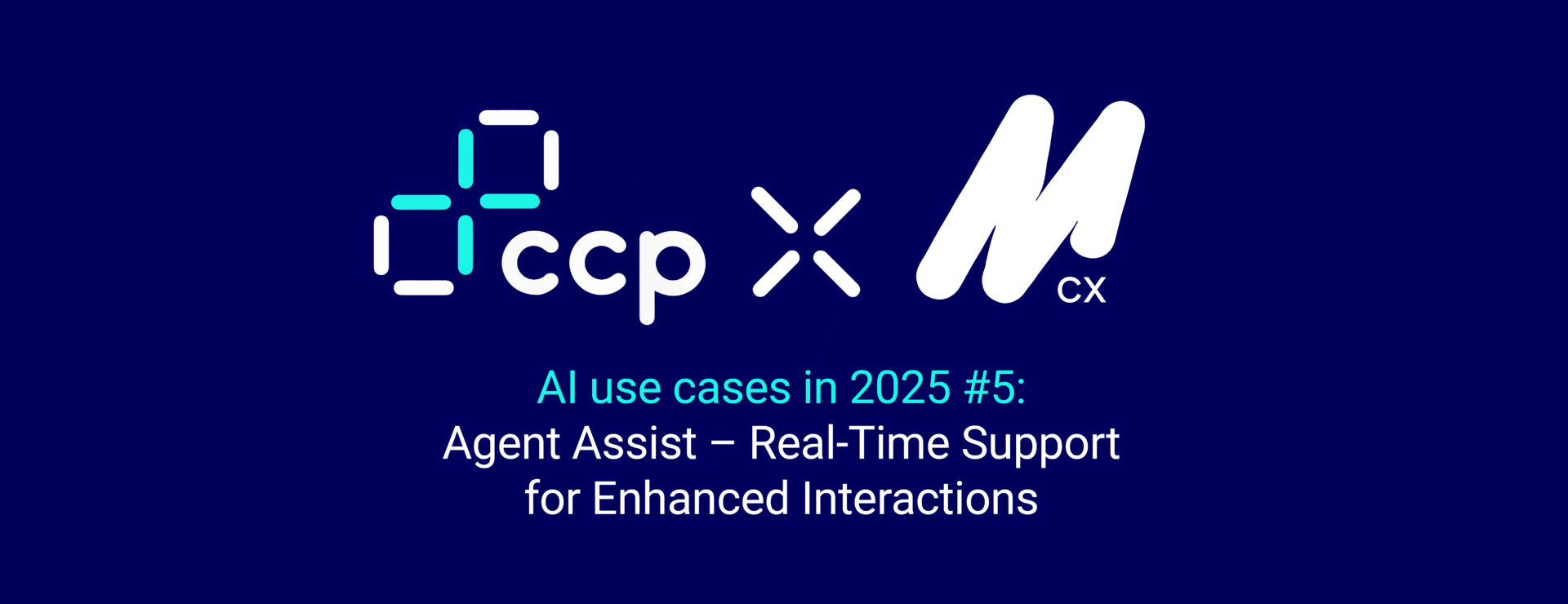
As self-serve improves, agents are increasingly left with the most complex queries.
Of course, it’s not always the case as many customers continue to prefer conversations over digital interactions, or are even digitally excluded, but for the most part, the expectation is that agents deal with call after call still, but with less and less respite where the query is nice and straightforward. And complex queries often involve multiple systems or multiple previous contacts, as they aim to follow the story. Which, if we go back to use case 1 – autowrap, we know our corporate memory can be patchy.
Yet customer expectation is that all of the necessary information is at the agent’s fingertips. And why shouldn’t they think that? Customers are often time poor and a bit frustrated already, so a longer than necessary call that may or may not answer their enquiry simply compounds their frustration.
What is the AI doing in Agent Assist?
As with all use cases to date, the AI is listening to calls to summarise key points. In Agent Assist – or ‘conversational guidance’, it is also retrieving and analysing previous data, so that, as with use cases such as auto coaching, it can make suggestions and guide processes during the customer interaction. It is, in effect, accessing and presenting the corporate memory that customers expect, but with bells on as it is also providing direction to the agent.
Key Benefits of Agent Assist: Assess customer needs
From the outset, the AI can help an agent understand what type of call they’re dealing with. Is this a customer with a quick query who is in a hurry, so it needs to be efficient, or do they have more complex needs that need to be addressed? Or even, is there an opportunity to cross- or up-sell to this customer?
Not only does this help to direct the nature of the call, it has an obvious impact on how the brand is perceived and even on topline revenue if it is possible to make a sale. Equally, it can prevent a clumsy attempt at a sale at the wrong moment, which could denude rather than enhance customer lifetime value.
This is also a key consideration in the push to self-serve, as customer experience becomes less personal and less represented by the people of the organisation. While a poor customer experience on a call can erode brand value, a great one can build far more than pure self-serve experiences.
Lower cognitive overload
In the context of agents needing to take more calls that are more complex, fatigue and cognitive overload is real. So while the last 15 years have been about focusing more on natural conversations and active listening, in a high-pressure, high-volume environment, doing that on every call is intense.
Of course, some agents may enjoy the need to think on their feet more than others, and therefore may be the ones who are trickier when it comes to adoption, but there are times when we all need a break from the mental strain of 100% concentration.
Optimise handling time
Agent assist can help to optimise handling time by keeping the agent on track, and reducing the amount of time spent unnecessarily building rapport. Of course some rapport is good, but if overdone, it can be confusing for the customer and result in repeat calls to resolve their actual query, rather than have a nice chat.
Accelerating the development of new starters
Dynamic conversational guidance allows new starters or less experienced agents to fly solo faster. They need to refer less to their supervisors for guidance (which in itself interrupts the flow of the call) and build confidence more quickly.
All of which translates to an increase in customer satisfaction from the use of corporate memory to deliver a better experience and faster call handling with responses that are right first time.
Implementation Considerations: Agent behaviour change
Aside from non-negotiables, such as good data (an absolute pre-requisite here) and systems integration, a key consideration for Agent Assist is to understand that it requires a much greater change in agent behaviour than the uses cases to date. Because you are in effect re-engineering conversations. So while it can accelerate the performance of a new starter, a longer tenured agent may be more ‘stuck in their ways’.
That means it typically takes 8 to 16 weeks to realise all the benefits of agent assist, possibly more if everyone is remote rather than office based. However, a two-to-four-month window to embed such change is both a really short time in the grand scheme of things and a small price to pay for the benefits available. Even considering that there will be a degree of things being a little slower in the first instance as you go through the J-curve of implementation.
However, almost all those aiming to realise AI benefits are jumping straight to this use case. Whereas they could prove the case for AI on much quicker and easier wins that are less likely to fail. What’s more, if those use cases have been implemented first, they lay the foundations for agent assist, and make both implementation and adoption easier and faster too. Without having proved the case for AI to the humans in the equation, adoption is slower, if accepted at all, and the benefits won’t come.
Knowledge base quality
Secondly, jumping too quickly to pure LLM Agent Assist and simply connecting to a knowledge base of historic conversations, then presenting information based on that alone as guidance, is a dangerous place to be. Because that assumes that all previous conversations were exactly as you wanted them, and not littered with the conversations of poorly trained or poor performing agents. Mojo’s advice here is to use the LLM to read in your script and build out the flow for that script and the associated dynamic pop ups. And it is essential that the knowledge base is part of continuous improvement too.
Measuring Success
There are some obvious key metrics that will be impacted by Agent Assist, from AHT and FCR to CSAT. More broadly, agent progression and job satisfaction can be measured through agent feedback, and customer lifetime value through customer analytics.
In summary, the key benefits are:
-
Increased agent satisfaction through reduced stress and increased performance
-
Increased customer satisfaction through faster and more accurate call handling
-
Reduced average handling time through more pointed conversations
-
Increased FCR through more accurate assessment and solutions
-
Improve opportunity spotting for x-sell and up-sell and guide to a sale
-
Improved customer lifetime value (CLV/LTV)
Done well, Agent Assist tools can enhance the capabilities of contact centre agents through intelligent support that enables agents to navigate complex queries or attempt to make sales with confidence. Which leads to more effective and satisfying customer interactions, greater customer lifetime value and even the potential to shift mindset from the contact centre as a cost centre to a value-driving profit centre.
To find out more about how CCP can help you make the right technology choices, read more here or get in touch.
This series of articles is drawn from our webinar with Jimmy Hosang, CEO and co-founder at Mojo CX. We explored seven key use cases for AI in contact centres, starting from the easiest productivity gains to value generating applications. You can find a summary of all seven use cases here, or watch the webinar in full here.




